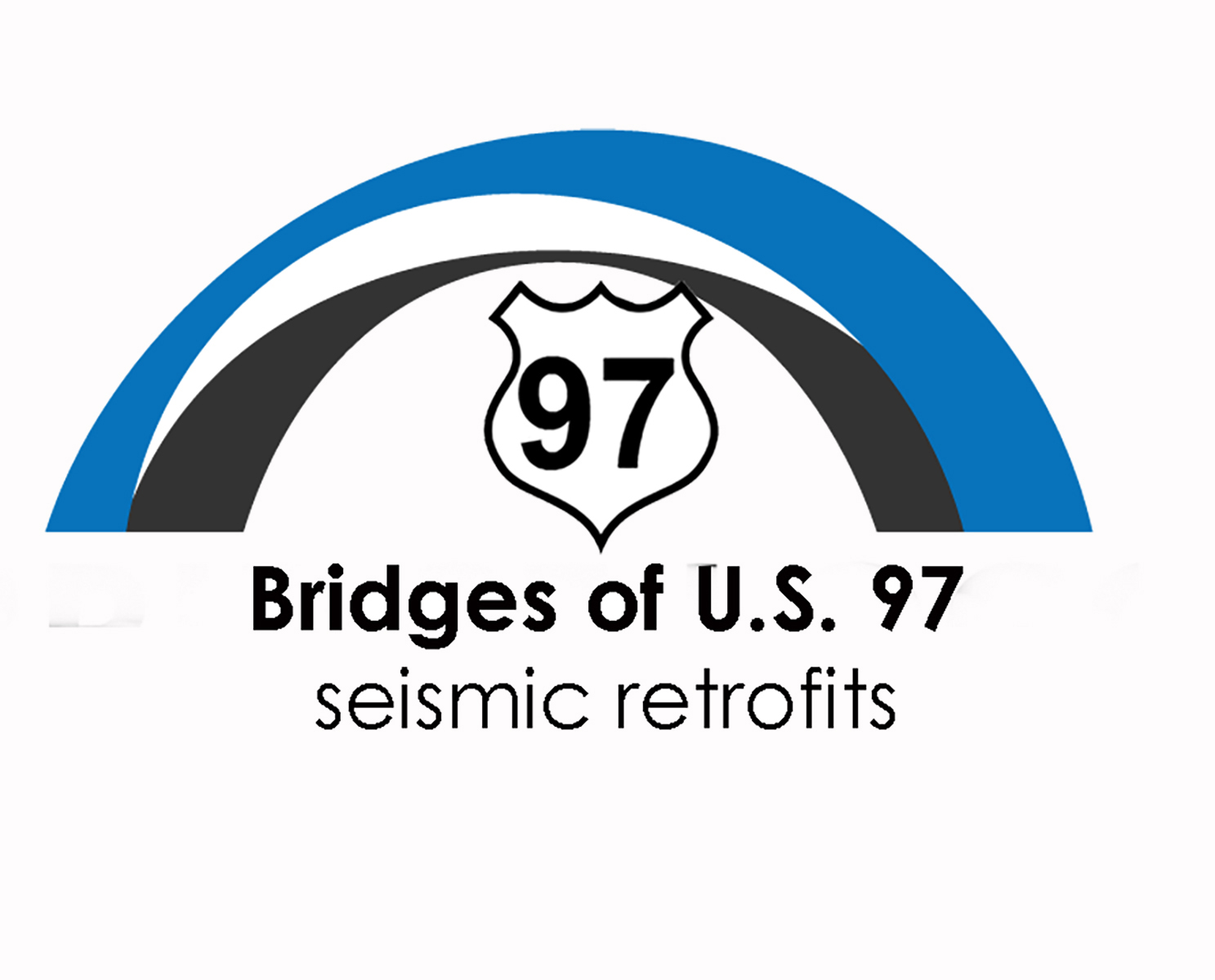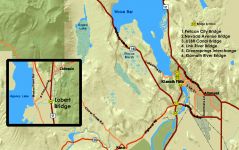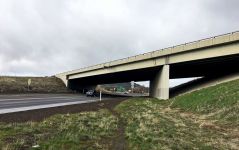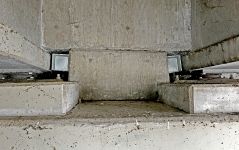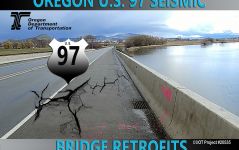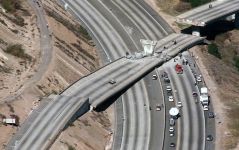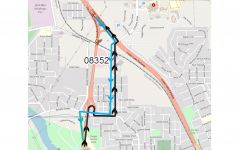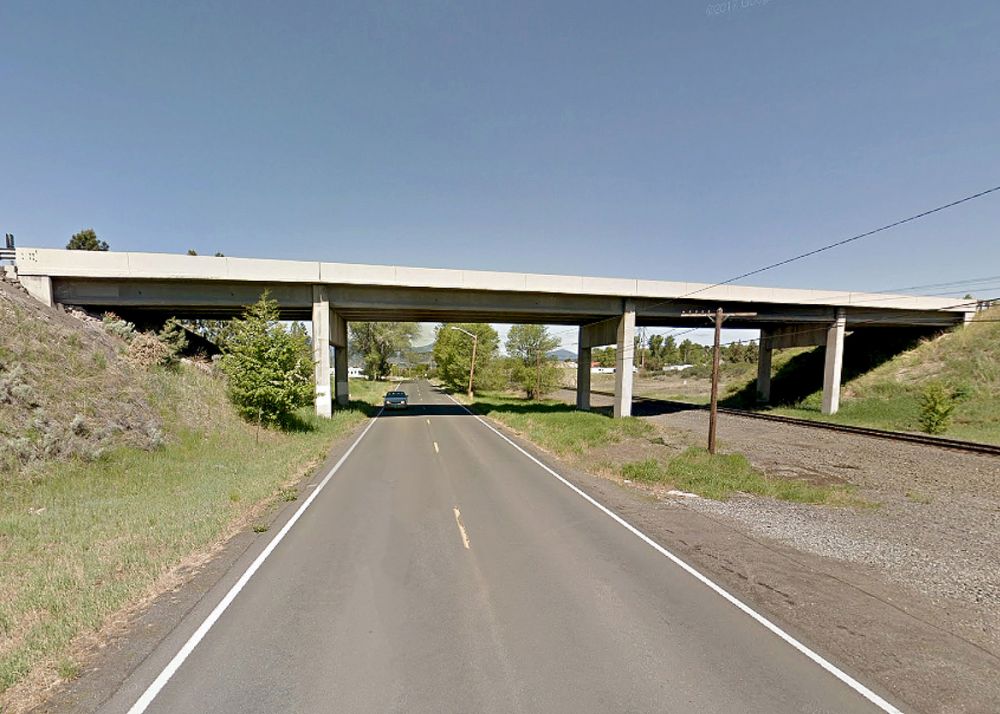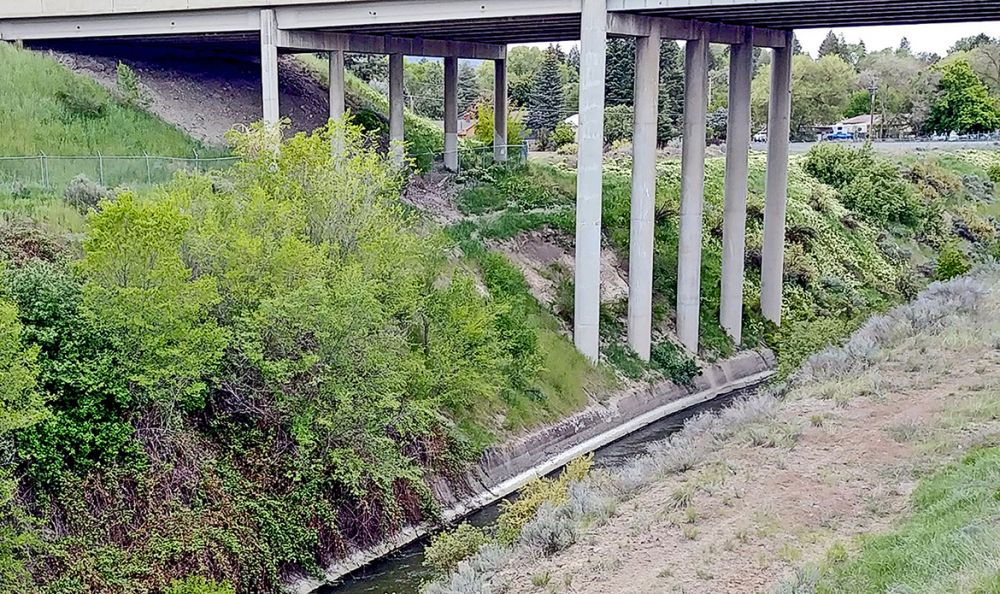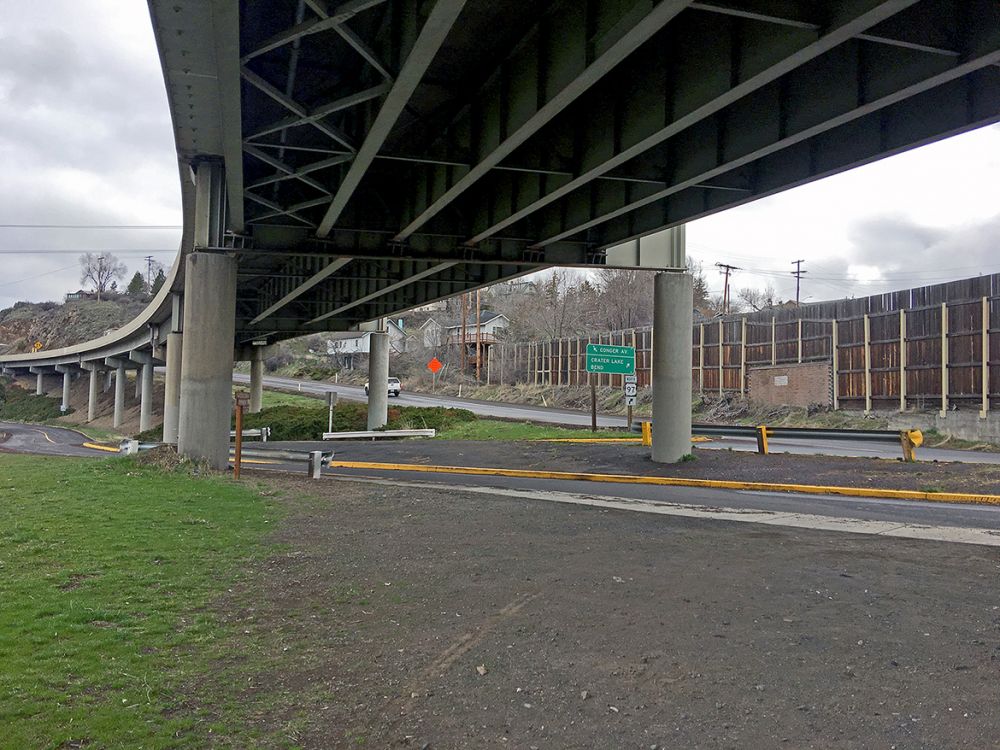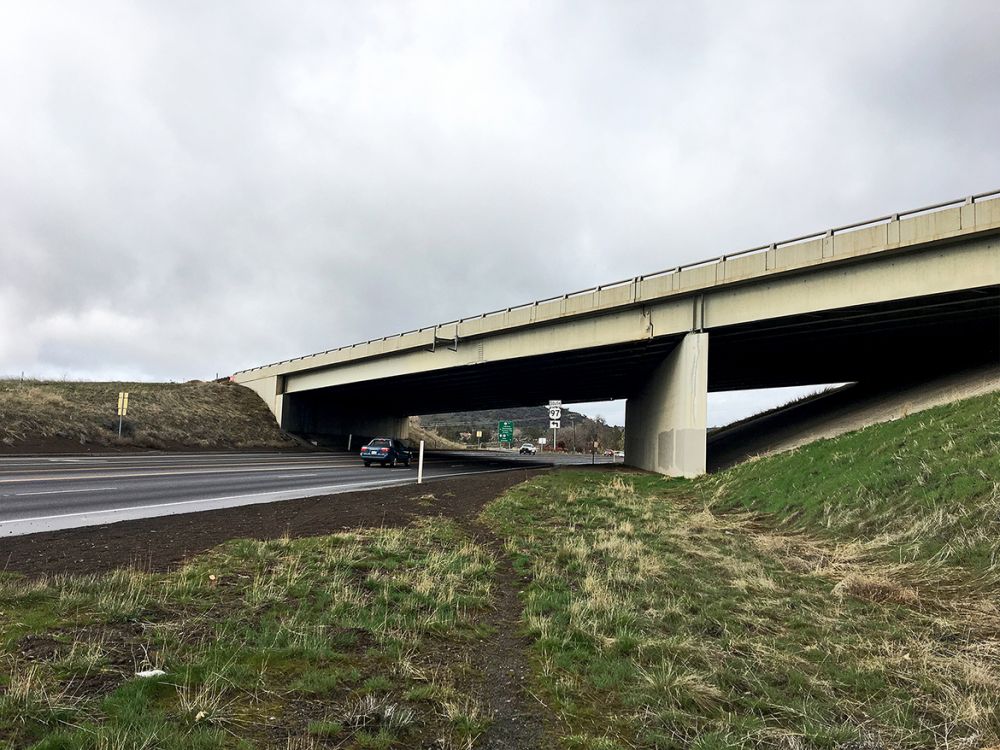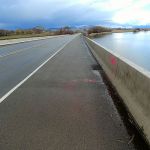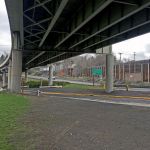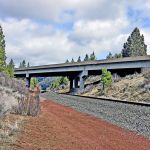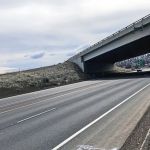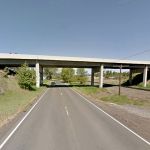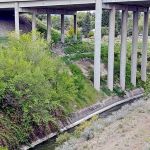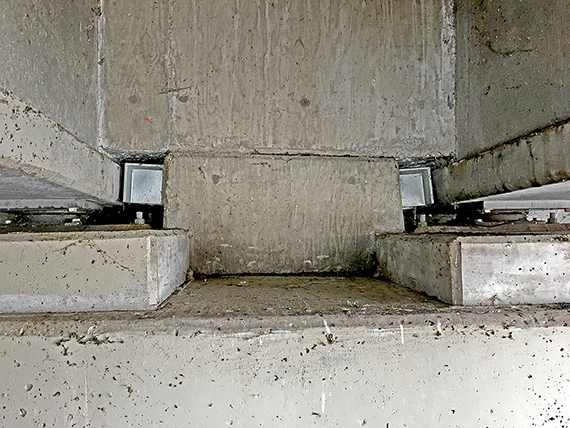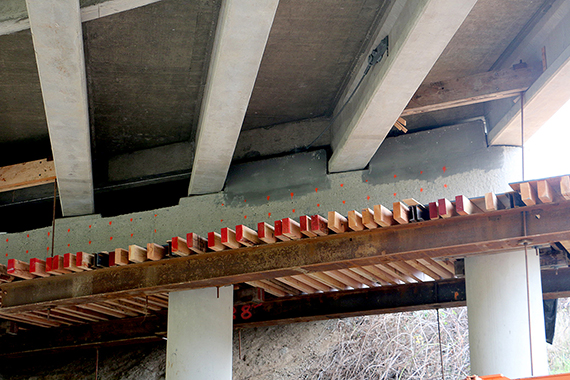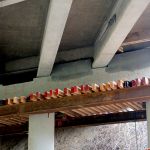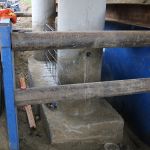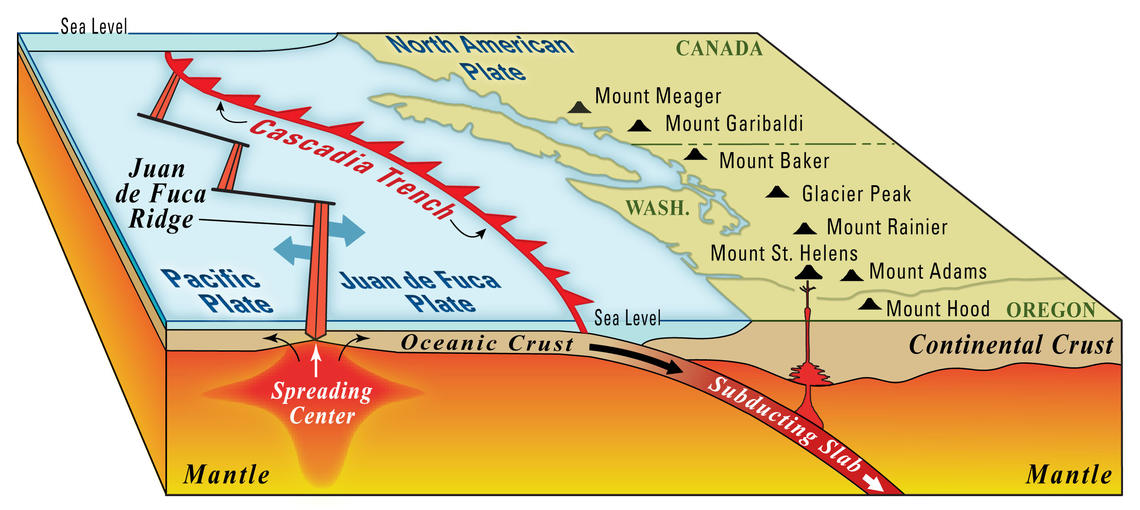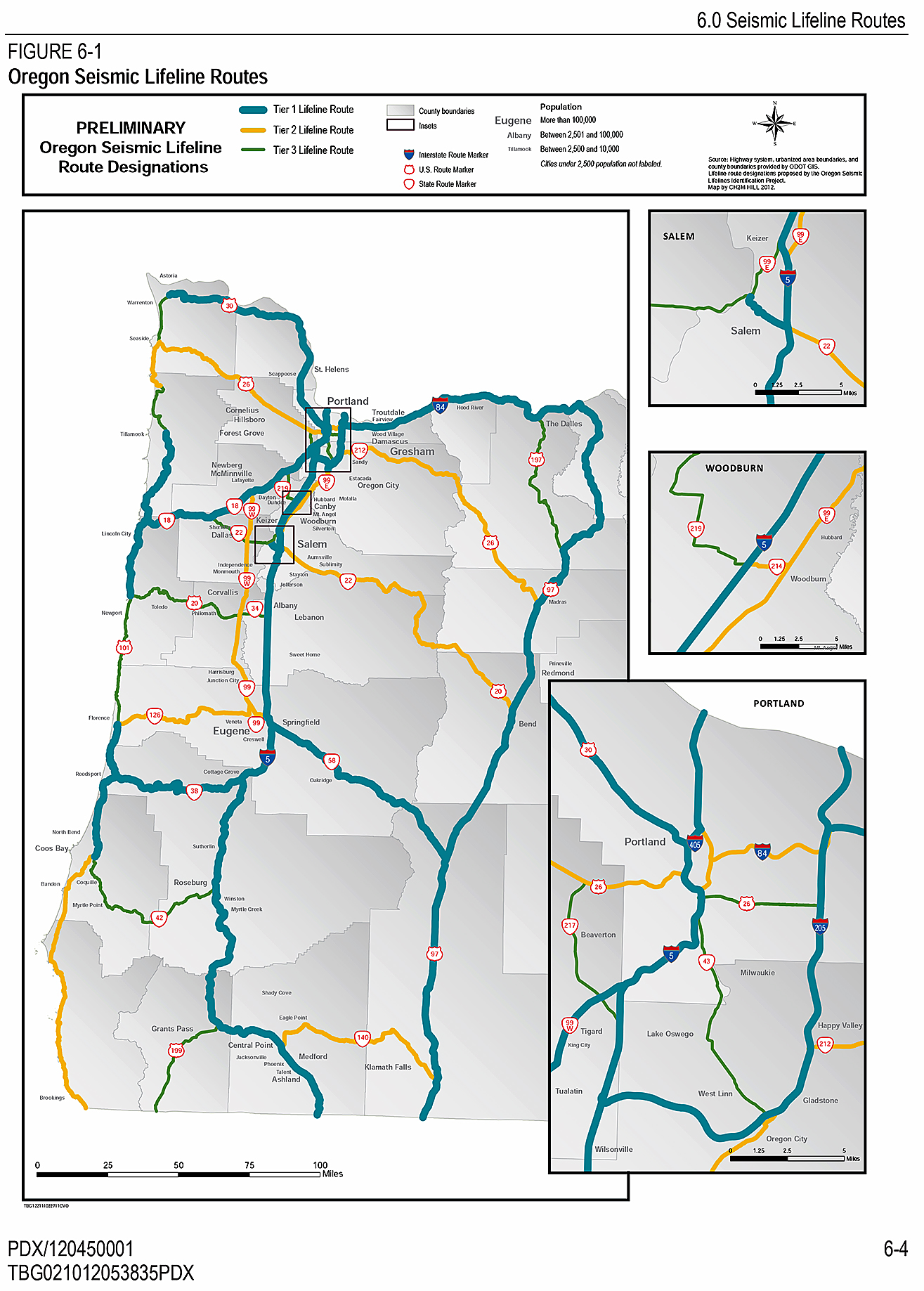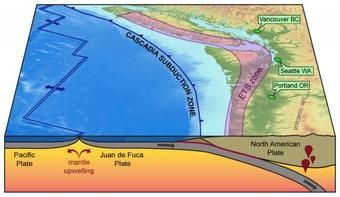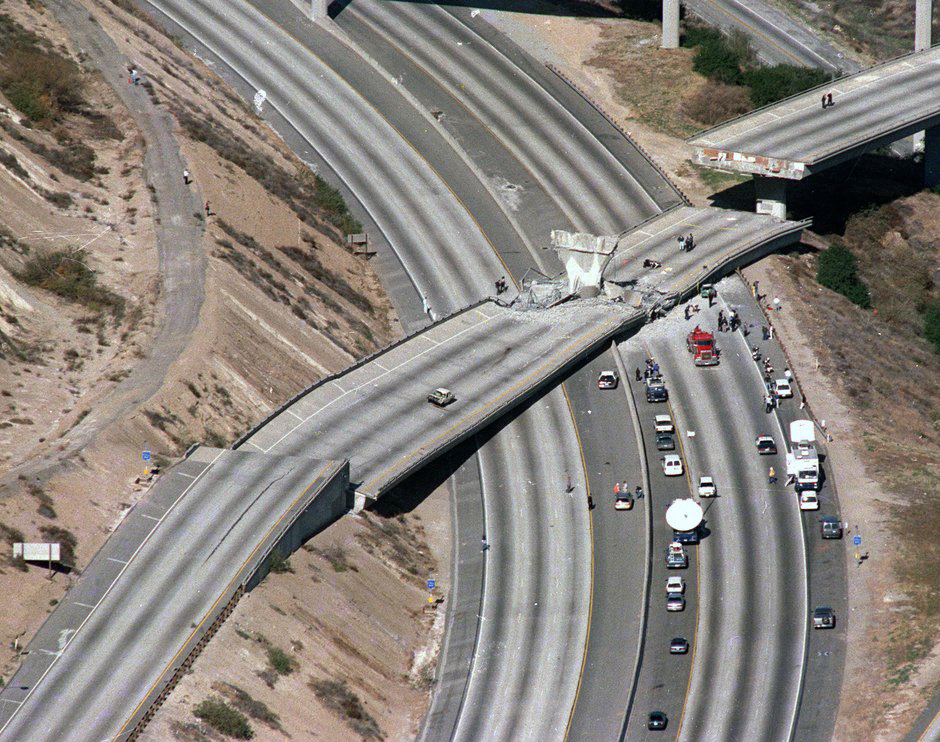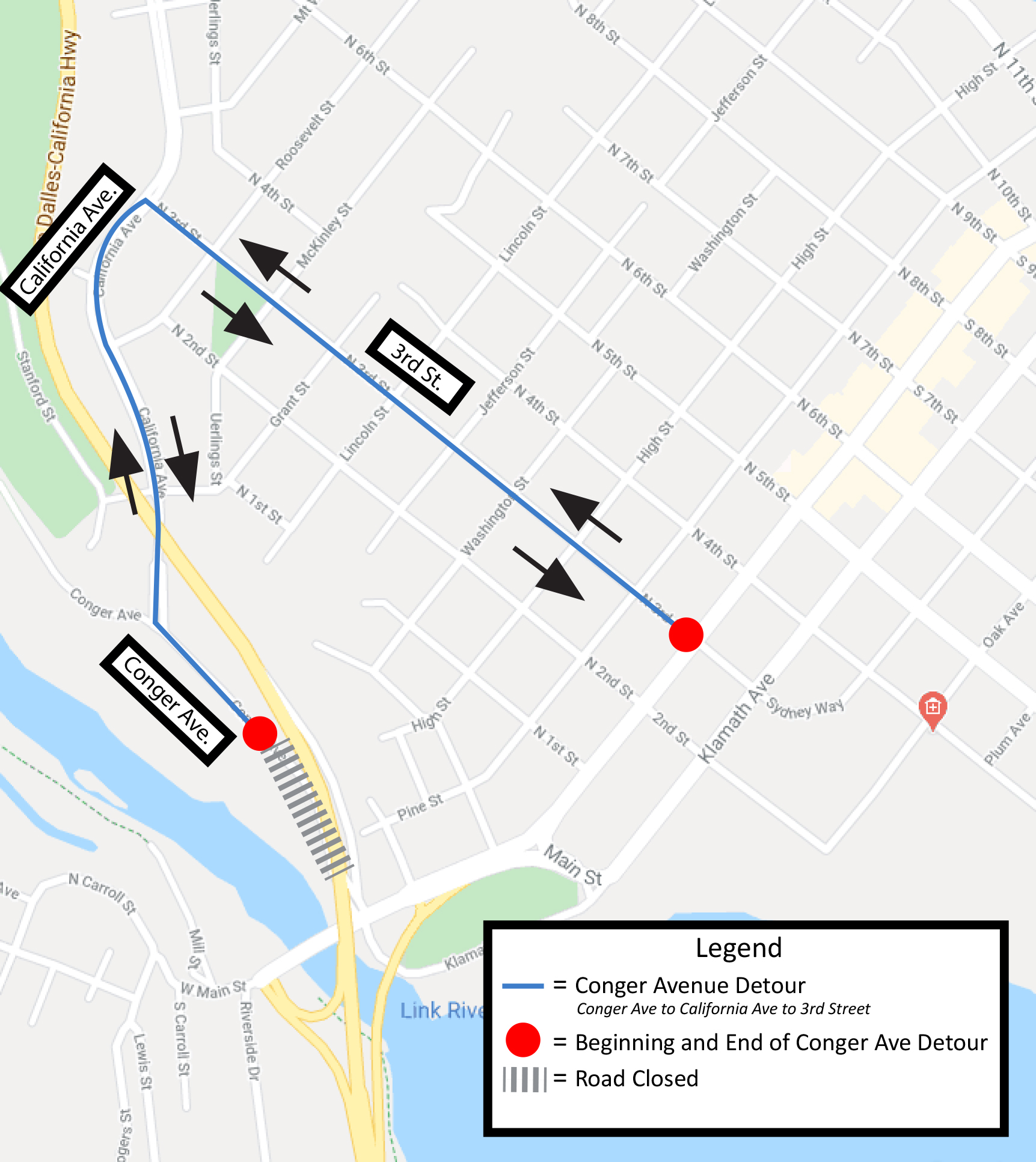This online open house is set up in six stations that can be reviewed quickly and easily by clicking on the navigation bars at the top and bottom of each page pointing to the next or previous stop. Content includes photos, maps, illustrations, construction impacts detour routes, timelines and videos.
Stations
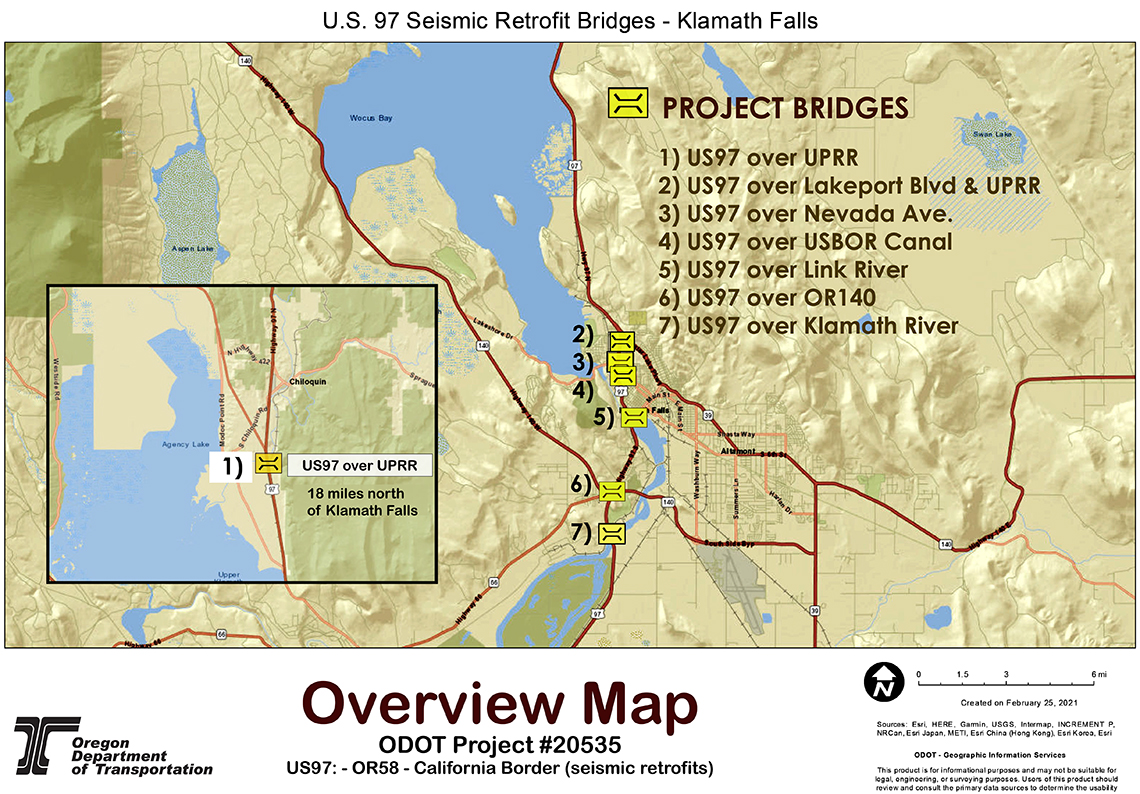
Project will improve seismic resiliency of U.S. 97 - an Oregon Lifeline Route
Most of the bridges in western Oregon are expected to suffer serious damage or destruction in a major earthquake. Since the expected ground-shaking in Central Oregon is expected to be lower than will be experienced in the Willamette Valley and Oregon coast, the state of Oregon will look to U.S. 97 to absorb the extra traffic pressure and function as a critical transportation corridor in the days and weeks following a major earthquake. In order to ensure that U.S 97 remains a resilient north-south highway corridor, ODOT determined that seven bridges in the Klamath Falls area are highly vulnerable to earthquake damage. ODOT decided it is necessary to retrofit six bridges and replace one – U.S. 97 over Lakeport Blvd, also known as the Pelican City Bridge.
From north to south, the following bridges are included as part of this project:
- US97 over UPRR (Lobert Bridge)
- US97 over Lakeport Blvd and UPPR
- US97 over Nevada Ave
- US97 over USBOR Canal
- US97 over Link River (Link River Bridge)
- US97 over OR140 (Greensprings Interchange)
- US97 over Klamath River
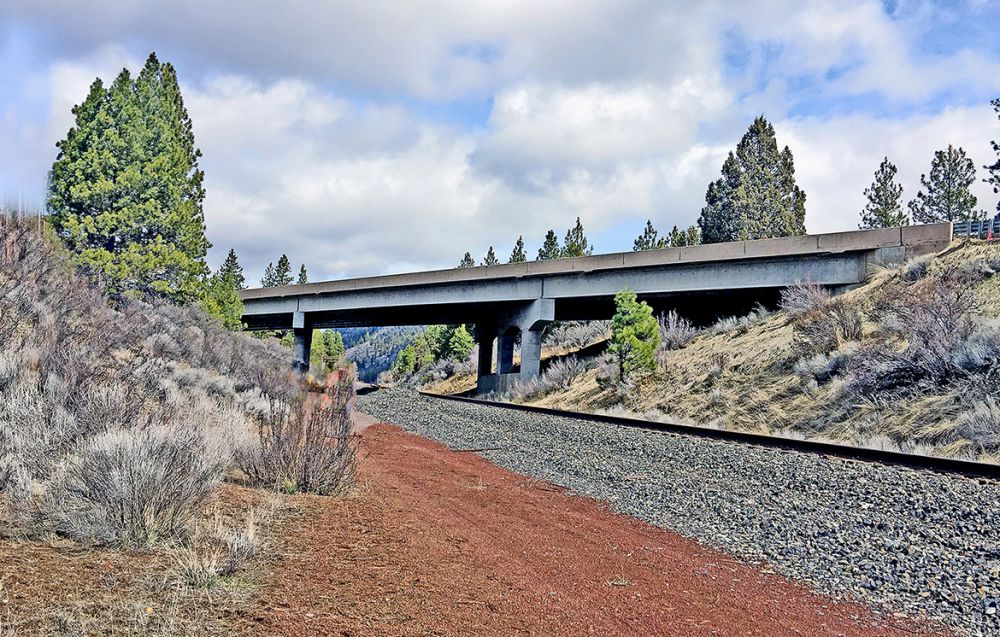
US97 over UPRR (Lobert Bridge) - This bridge is just south of the Williamson River, crossing over the UPRR. Retrofits for this bridge consist of strengthening supports below the bridge. As a result, most work will occur below the bridge.
US97 over Lakeport Blvd & UPRR (Pelican City Bridge) - This bridge is located just south of the U.S. 97/OR39 intersection at the north end of Klamath Falls. The bridge is often referred to as Pelican City Bridge. During project development the team looked at retrofitting the current bridge but due to high repair costs and future maintenance costs, ODOT decided to replace the bridge. The bridge replacement will be done by closing U.S. 97 for up to six weeks and using accelerated bridge construction to remove the existing bridge and build a new bridge in the same place. Typically replacing a bridge with conventional bridge replacement methods takes around six months (or longer). Accelerated bridge construction will shorten the impact to the traveling public. For this bridge, much of the new bridge will be constructed below the existing bridge. Once the new bridge is in place, the roadway leading up the bridge will be constructed and guardrail installed. Once all the safety elements are completed, the roadway will be opened to traffic. While the highway is closed a detour for trucks and passenger vehicles will be in place.
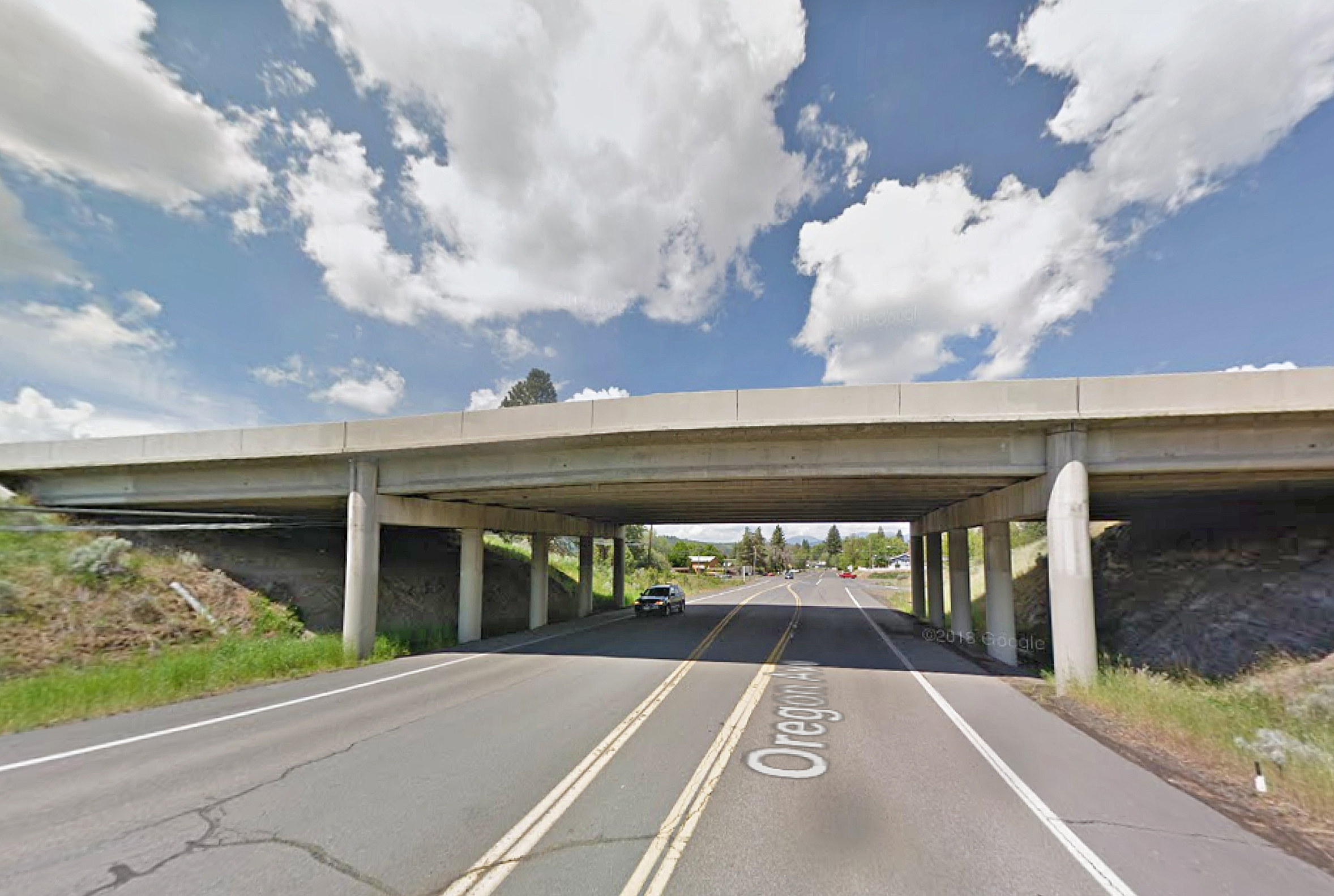
US97 over Nevada Ave - This bridge is just to the south of the Pelican City Bridge. This bridge will require two main retrofit elements. The first are drilled shafts behind the south end of the bridge. During drilled shaft construction, two lanes of traffic will be closed and traffic on U.S. 97 to be shifted to one side of the bridge to allow the construction contractor to work from the roadway to install the drilled shafts. The second retrofit element consists of enlarging the footings (under the ground) for interior bents on either side of Nevada Avenue. This will require shift Nevada Avenue traffic to one side, and then the other, to allow construction on the footings. During that time, the turn lane in the middle of the road will be closed.
US97 over USBOR Canal - This bridge is just to the south of the U.S. 97 over Nevada Avenue Bridge. This bridge will have two types of retrofits, those above the bridge on U.S. 97, and the other below the bridge. Within the U.S. 97 roadway, drilled shafts will be installed at the bridge ends. Similar to the Nevada Avenue Bridge, this will require closing two lanes temporarily and shifting traffic to one side of the bridge. Beneath the bridge, one support will be strengthened by installing micropiles through the existing footings. Additionally, various connections between the bridge deck and the supports will also be strengthened at all bridge supports.
US97 over Link River (Link River Bridge) - This is by far the most complex retrofit in this bridge bundle. Bridge replacement isn't an option with the current funding so the construction contractor will essentially be strengthening or completely replacing all of the bridges supports. In addition, connections between the bridge deck and supports will also be strengthened. On U.S. 97, drilled shafts will be installed behind each end of the bridge, including the soutoff-ramp. During this time, traffic will be restricted to one lane due to the narrowness of the bridge. Traffic will be flagged through the bridge, one direction at a time. While installing the drilled shafts behind the southbound off-ramp, the ramp will be closed, with traffic detoured down to OR66/Green Springs Highway Interchange. Beneath the bridge, construction activities are extensive, and will require Conger Avenue to be closed for about a year. Local access will still be allowed while Conger Avenue is closed to through traffic. While it is closed, support strengthening will included installing micropiles through footings, enlarging and strengthening columns, and installing restrainer cables and keys to better connect the deck onto the supports. In addition, Main Street will be narrowed to two lanes and shifted to the south to allow the support adjacent the road to be replaced completely. In addition, the western access road to Veterans Park will also be temporarily closed. This will allow access to the five supports in the Link River, which are also being replaced entirely. Due to limitations on when work can occur within the Link River, construction is expected to take about four years.
US97 over OR140 (Greensprings Interchange)- This is the U.S. 97 Bridge over Highway OR66 Green Spring Highway. Retrofitting the bridge consists of strengthening the supports and the connections between the deck of the bridge and those supports. All work will be completed below the bridge, so no traffic impacts will occur on U.S.97. This will require closing a lane in each direction on OR66 to provide access to each support.
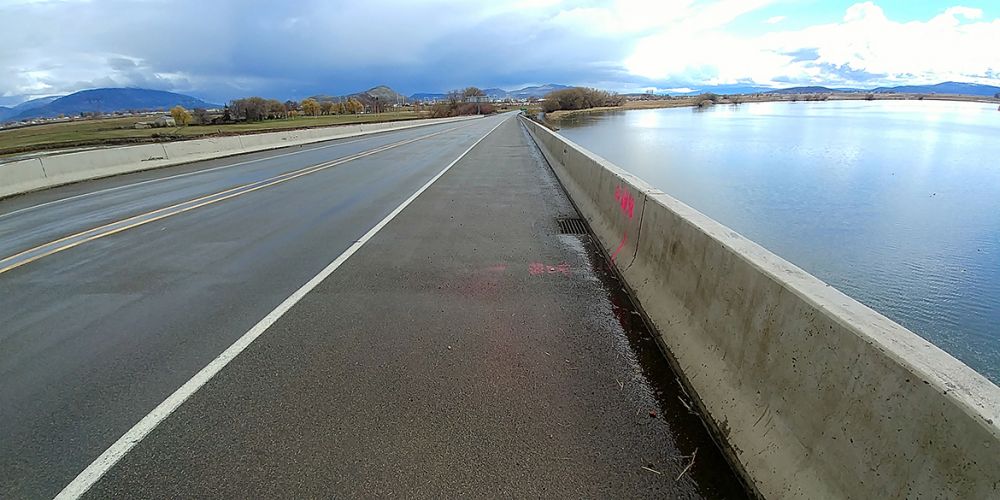
US97 over Klamath River - This bridge has minimal retrofit work needed. Work will be completed from the highway at the north end of the bridge and from beneath the bridge at the south end. During construction, shoulders will be closed and traffic shifted to one side or the other on a daily basis. Traffic control measures will be installed daily, with the shoulders and roadway being opened at the end of each work shift.
A note for all bridges…
Many of the bridges will have existing guardrail replaced with new guardrail meeting current safety and crash standards. Also, three of the seven bridges are over railroads. All three of these bridges will have protective fencing installed to prevent road debris and snow from falling onto the railroad tracks and trains.
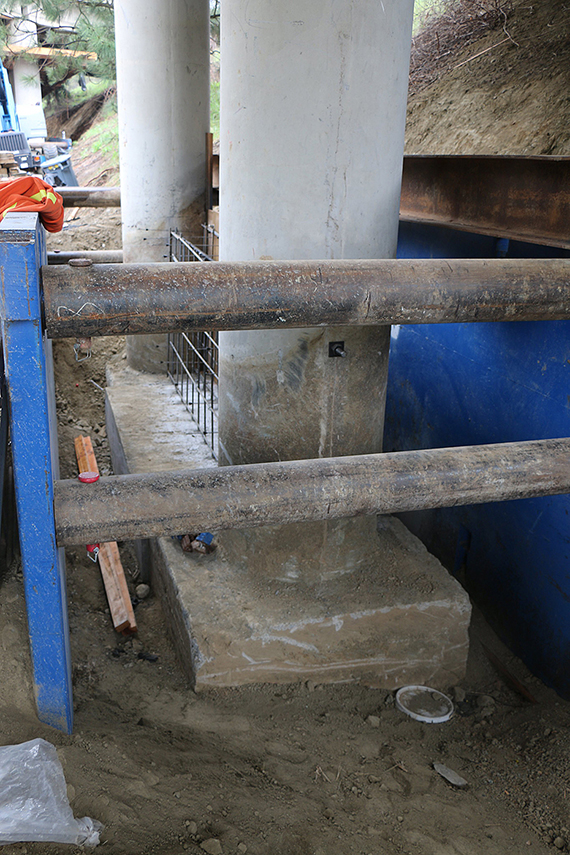
U.S. 97 will be closed for six weeks when the bridge over Lakeport Blvd. and UPRR is replaced. There will be two separate detour routes, one for passenger vehicles and one for trucks and oversized loads.
During the closure, passenger vehicles will be redirected as follows:
Northbound Passenger Detour Route -- U.S. 97 to Nevada St. to Biehn St. to Crater Lake Parkway to U.S. 97.
Southbound Passenger Detour Route -- U.S. 97 to Crater Lake Parkway to Biehn St. to Nevada St. to U.S. 97
Passenger Vehicle Detour Route during U.S. 97 closure
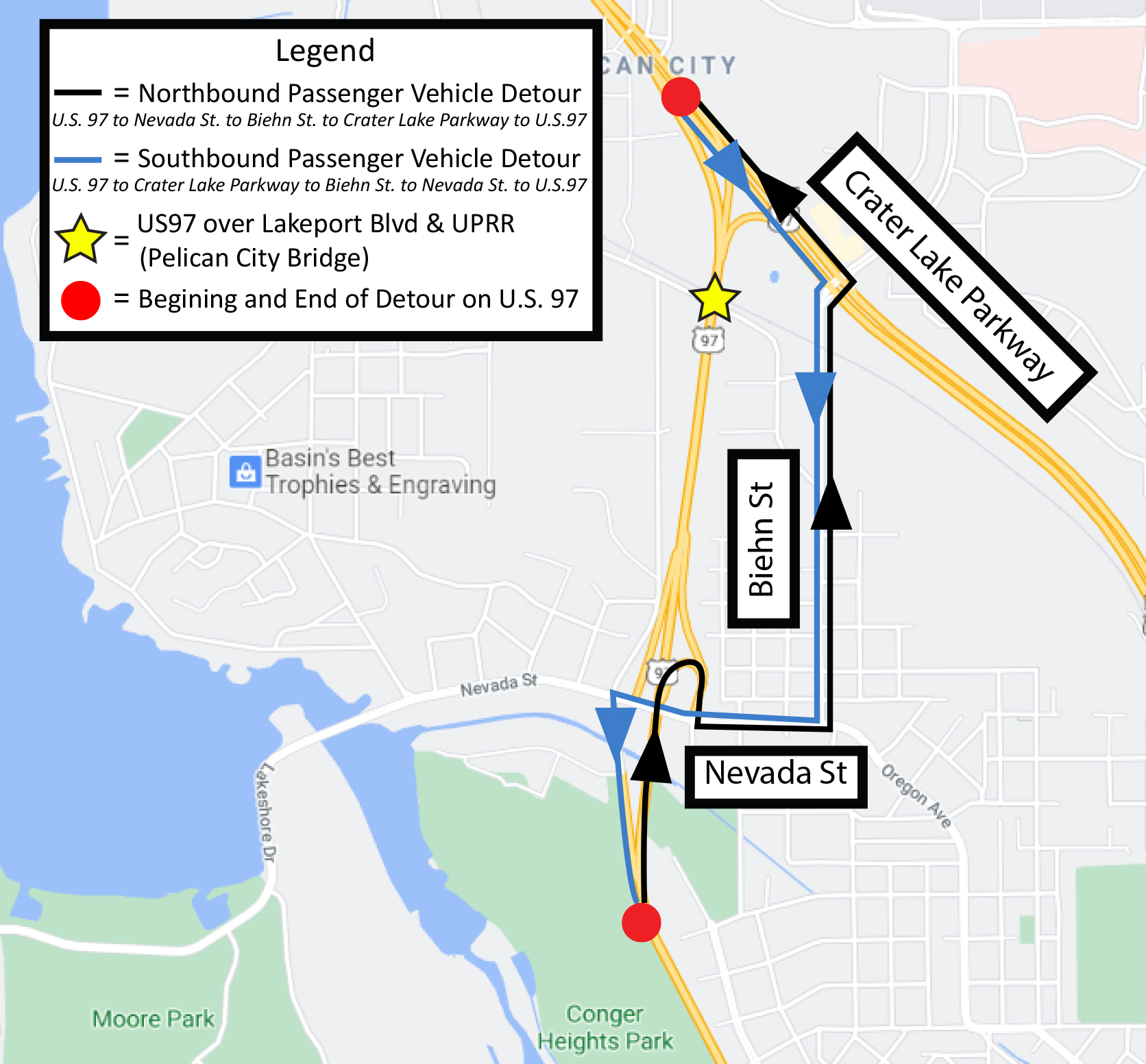
Truck Detour Route during U.S. 97 closure
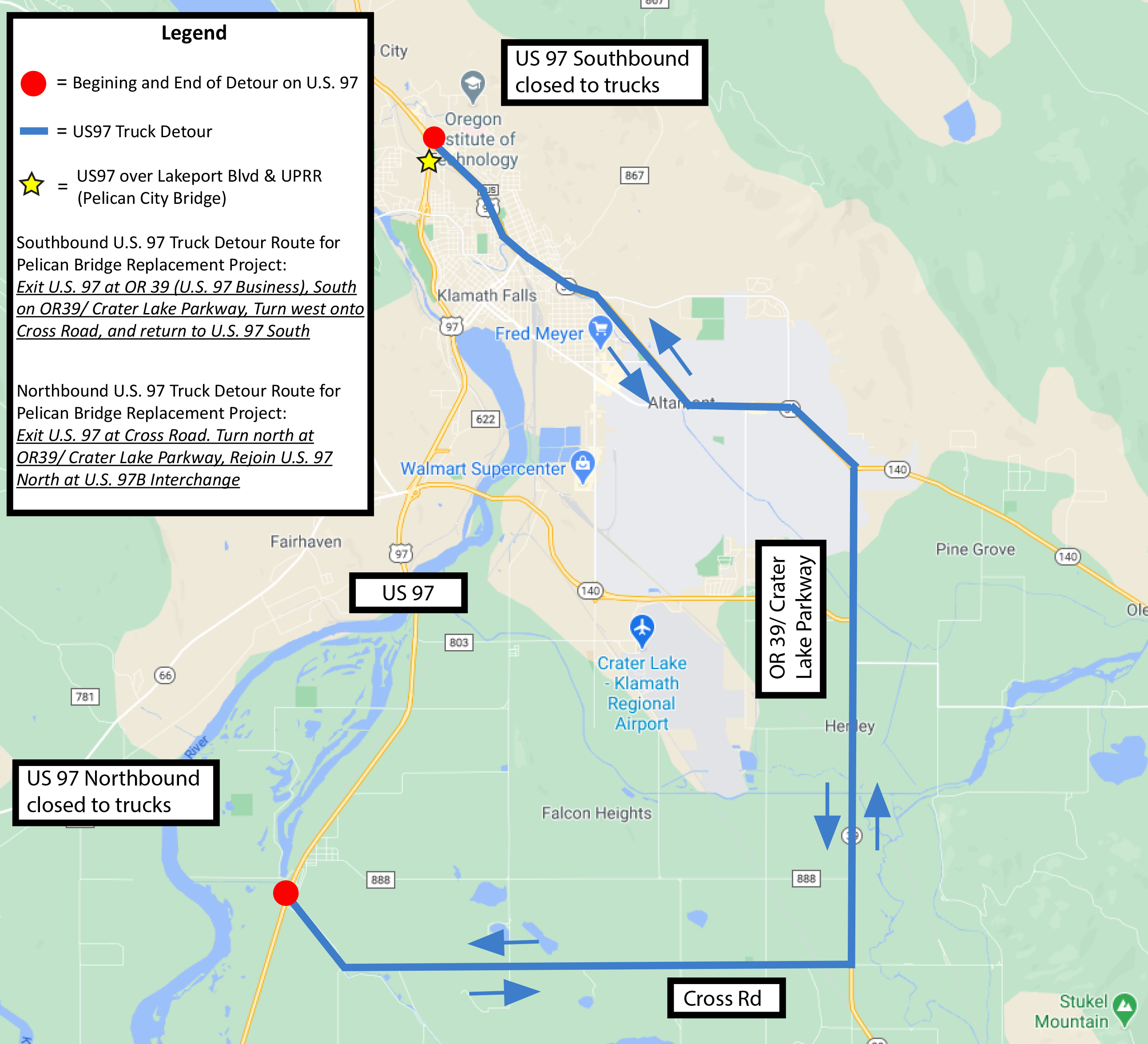
Klamath Falls Local in-town detours/closures
CONGER AVE.DETOUR – Closure of Conger Ave is required for contractor to access bridge columns and foundations under US97. The closure is anticipated to be approximately 1 year Spring 2022 – Spring-2023.
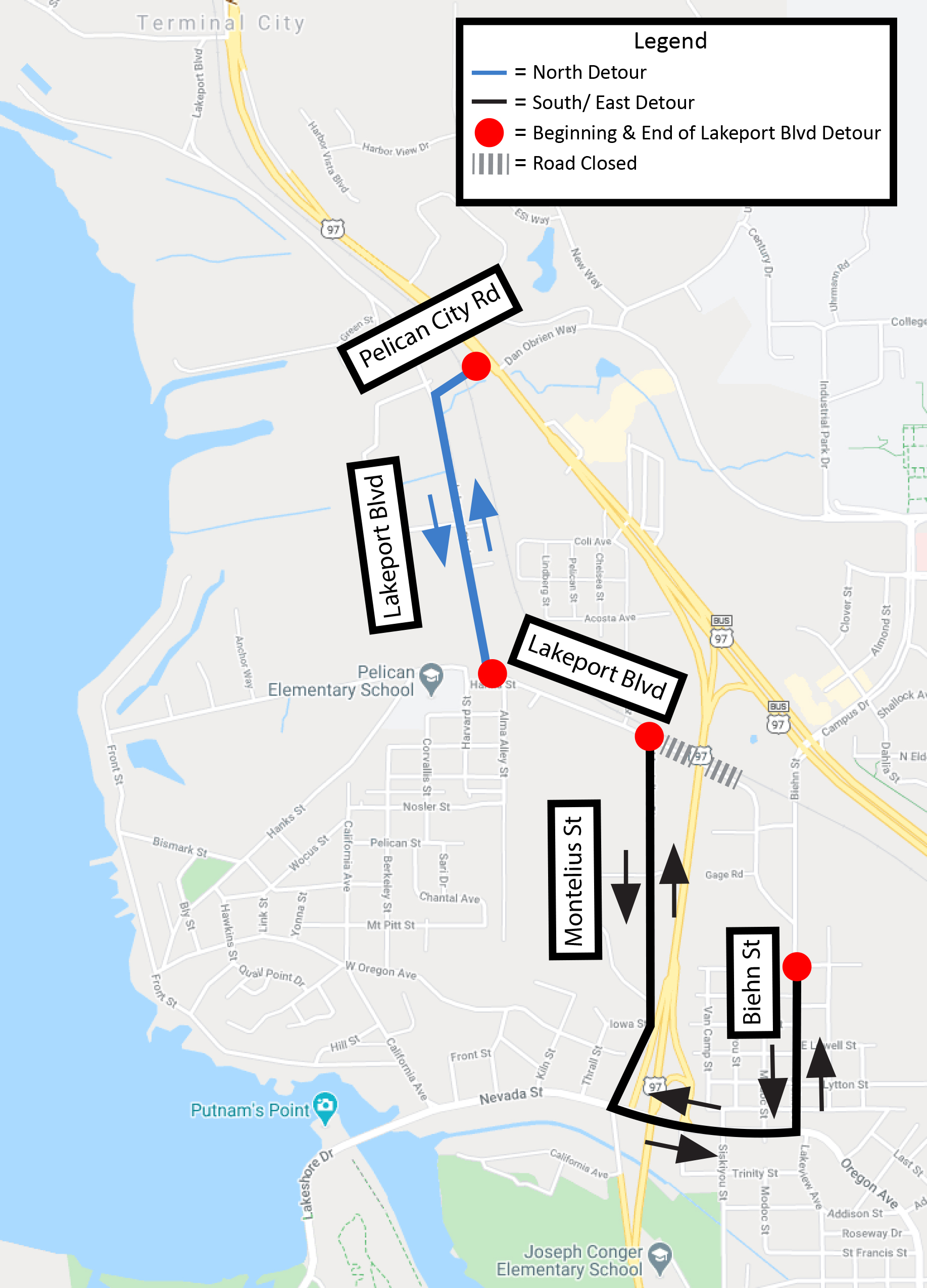
US97 over UPRR and LAKEPORT BLVD. – Closure of Lakeport Blvd for approximately 2 weeks in Summer of 2023. There will most likely be two 1-week closures. The closures are needed to allow the construction contractor to remove existing bridge and place bridge beams for new bridge.
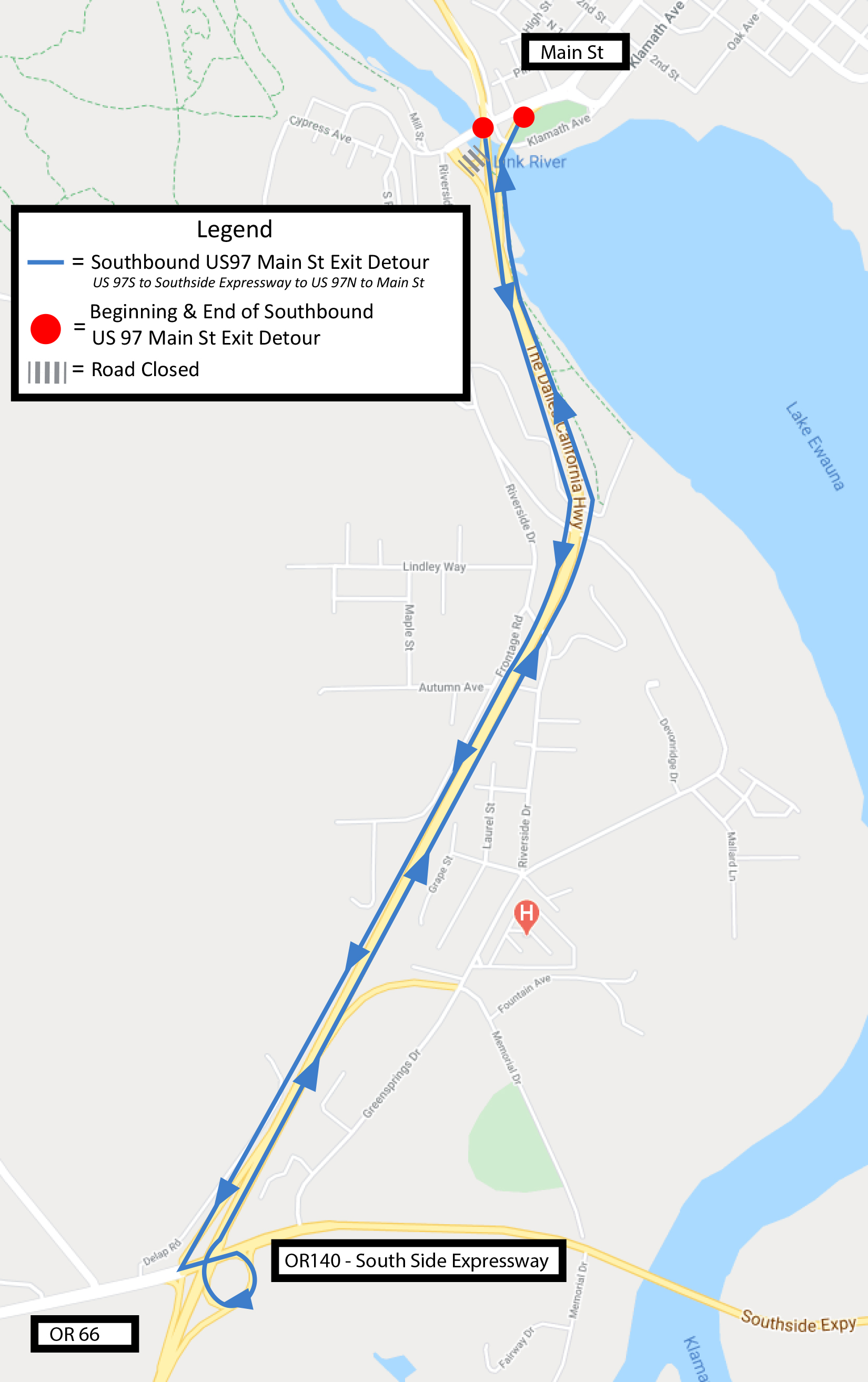
U.S. 97 OVER LINK RIVER MAIN ST. EXIT DETOUR -- Closure of US97 SB off ramp to Main Street will be closed for approximately 2 weeks Spring/Summer 2022. The closure is required for bridge repairs impacting traffic at the US 97 SB off ramp.
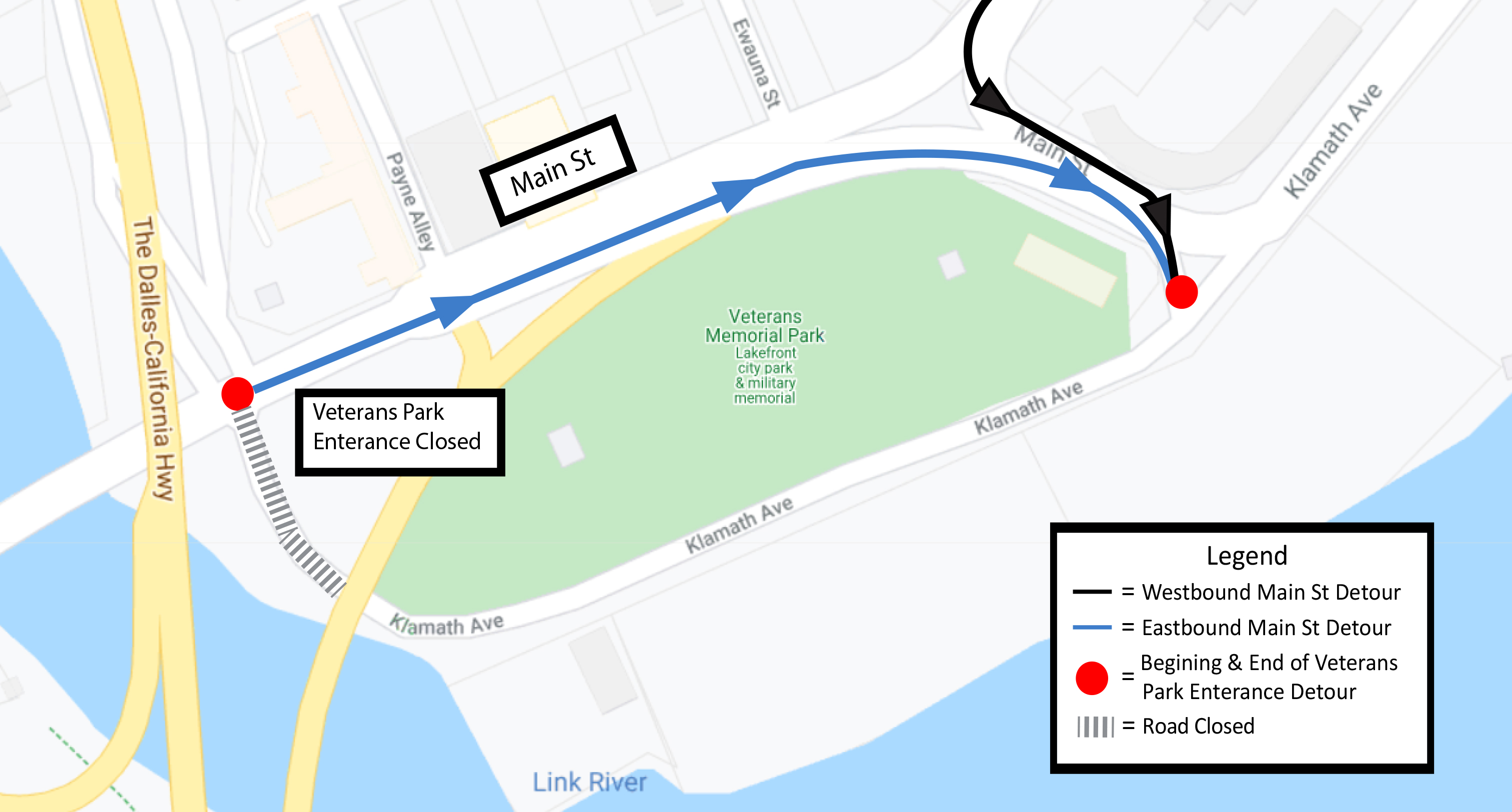
VETERAN PARK ENTRANCE DETOUR – Closure of the west entrance into Veteran’s Park for approximately 3 ½ years, Spring 2022 to Fall 2025. The closure allows the construction contractor access to the bridge by way of the Link River.
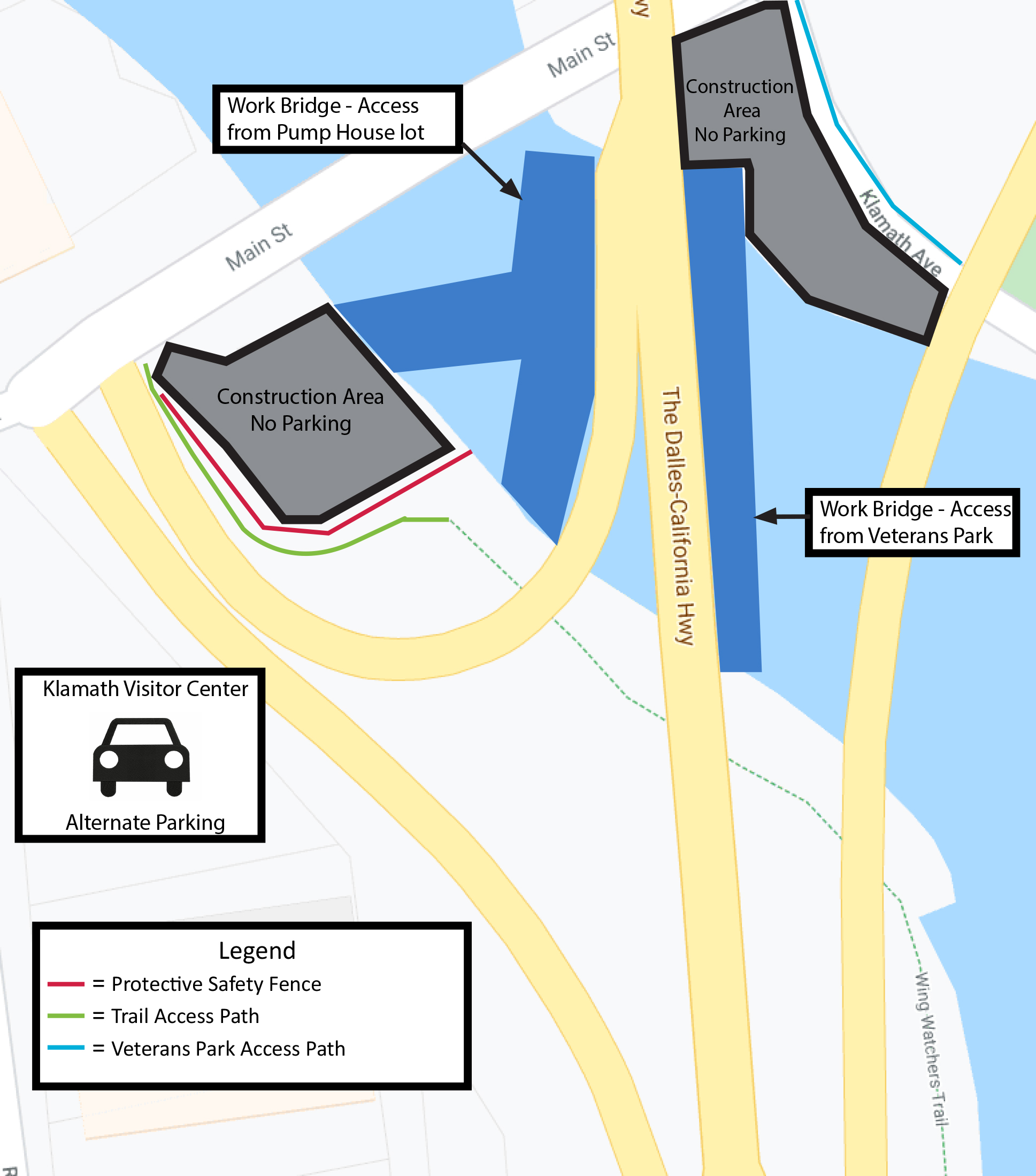
The construction contractor will use the east and west banks of the Link River to access the Link River Bridge piers and foundations. Temporary work bridges will be constructed from the bank of the Link River to allow the contractor access to work areas. For safety reasons the trail will be detoured around the contractors work area for approximately 3 ½ years, Spring 2022 – Summer 2025. Alternate parking during this time will be provided at Veteran’s Park or the Klamath Visitor Center located at 205 Riverside Dr.
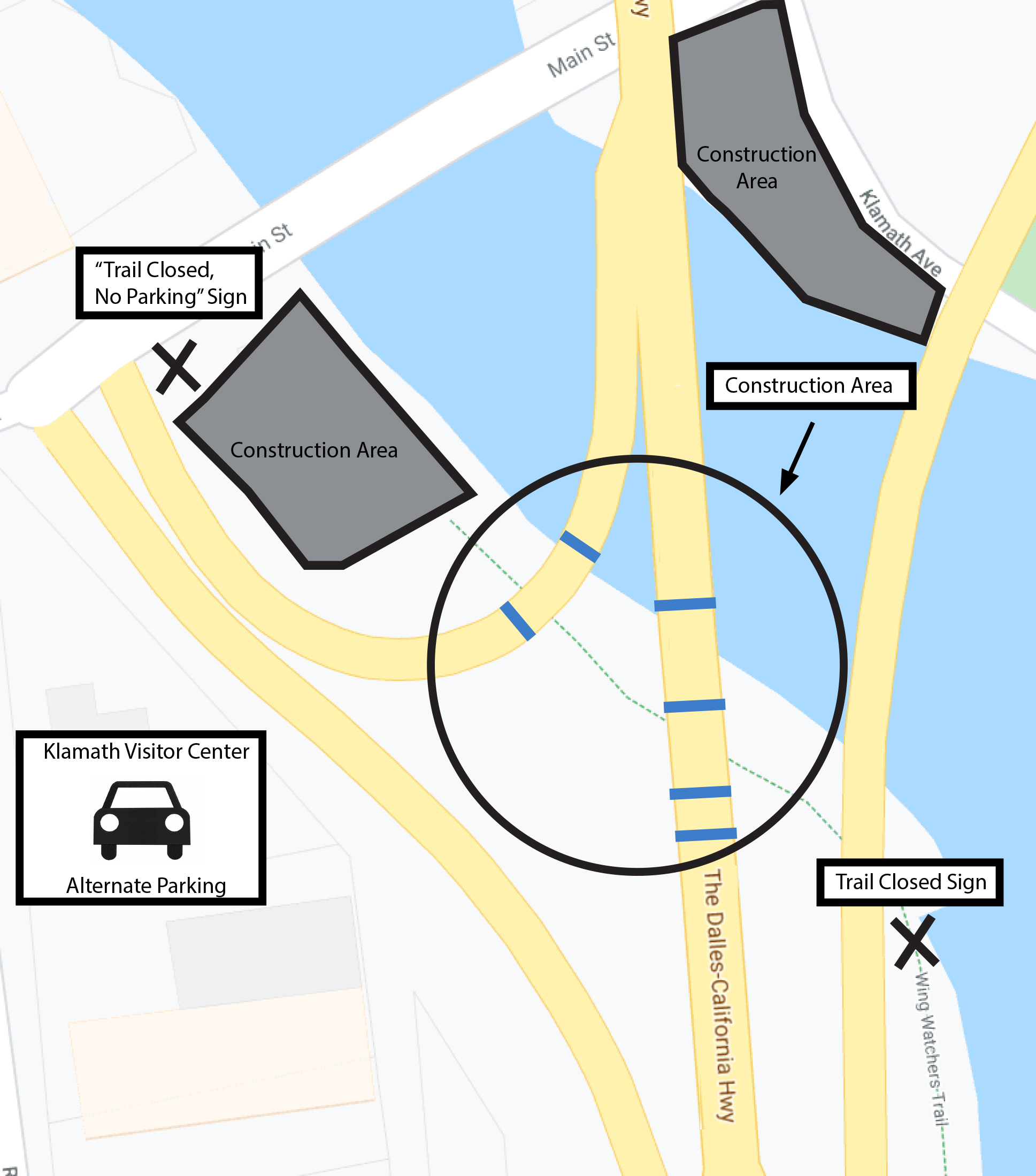
WINGWATCHERS TRAIL CLOSED – The trail will be required to be closed for approximately one year, sometime during 2023 or 2024. The trail will be required to be closed for approximately one year, sometime during 2023 or 2024. Alternate parking during this time will be provided at Veteran's Park or the Klamath Visitor Center located at 205 Riverside Dr.
